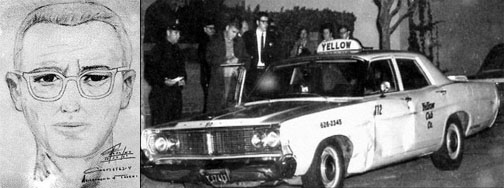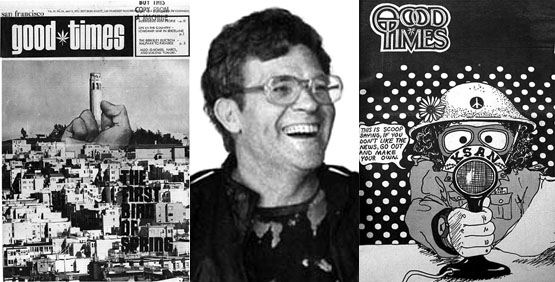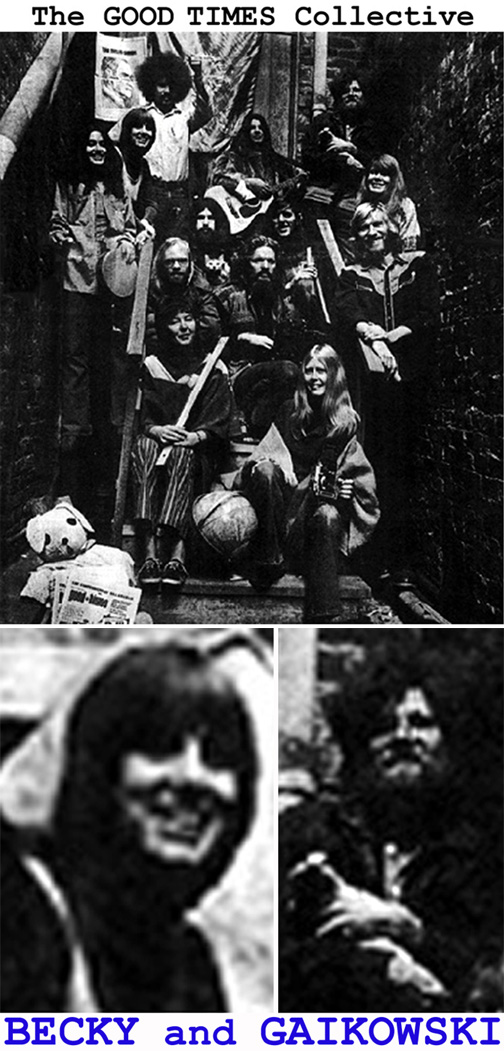In June 2011, I received several emails from a man who claimed he had solved the Zodiac’s notorious “340” cipher. Corey Starliper complained that he had contacted authorities in Napa, Vallejo, Solano and San Francisco but he could not find anyone who would listen to him. Starliper stated that nine hours of work on his part had produced a solution with “98% readability.” I agreed to examine the solution and pass it along to others who knew much more about codes than myself.
Upon receipt of said solution, I immediately recognized its disjointed, garbled text as well as the many misspellings. To me, the solution was obviously incorrect and appeared to have been forced to fit a predetermined set of priorities– most specifically: linking the code to the once-prime suspect, Arthur Leigh Allen.
KILL/SLF/DR/HELP/ME/KILL/MYSELF/GAS/CHAMBER
/AEIOUR/DAYS/QUESTIONSABLE/EVERYY/WAKING
/MOMENT/IM/ALIVE/MY/PRIDE/LOST/I/CANT/GO
/ON/LIVING/IN/THIS/WAY/KILLING/PEOPLE/I/HAV/KILLD
/SO/MANY/PEOPLE/CANT/HELP/MYSELF/IM/SO/ANGRY
/I/COULD/DO/MY/THING/IM/ALONE/IN/THIS/WORLD
/MY/WHOLE/LIFE/FUL/O/LIES/IM/UNABLE/TO/STOP
/BY/THE/TIME/YOU/SOLVE/THIS/I/WILL/HAV/KILLD
/ELEVEN/PEOPLE/PLEASE/HELP/ME/STOP/KILLING/PEOPLE
/PLEASE/MY/NAME/IS/LEIGH/ALLEN/
The overwhelming majority of those who examined the Starliper solution concluded that it was invalid and the results had been forced to fit a preconceived goal. Part of Starliper’s solution was based on his belief that the number of symbols in the 340 cipher was a clue referencing the Virgin Islands, where Zodiac victim Darlene was said to have traveled before her death. Starliper stated that the number 340 was also the area code for the Virgin Islands, however, this was not true at the time of the Zodiac’s code and that prefix was not used until decades later. This did not deter Starliper, nor was he discouraged by the news that many had deemed his solution to be invalid. After promising to “write back” with more information to explain his solution and methods, Starliper vanished– he never sent the explanation of his methods and findings as he had previously promised.
In late July 2011, Starliper resurfaced in Internet stories with titles such as “Massachusetts Man Says He’s Cracked Zodiac Killer Code,” “Tewksbury Native: I’ve Cracked The Code Of The Zodiac Killer,” and “Someone Finally Cracked One of the Zodiac Killer’s Codes.” The articles were often accompanied by a photograph of a smiling Starliper proudly displaying his “solution.” Starliper was quoted by Patch.com: “I found it exciting, that I was actually able to get into his head when nobody had for over 40 years.” He complained that no one in law enforcement would listen to his claims and said, “It’s disheartening to know that the authorities have basically shut the door on it.” Starliper had apparently chosen to blame authorities and ignore the fact that his solution was not valid.
Starliper stated that he first became interested in the Zodiac case after seeing the 2007 film ZODIAC and reading the book version by Robert Graysmith. “I saw the movie first, and when I saw the movie, (I had) instant interest in it… When I read the book, I was … just hungry for more when the book ended… I became absolutely obsessed with the case, to the point that I’d look up from Graysmith’s books … and realize that I’d actually forgotten to eat.†The book and the film ZODIAC both presented a distorted and factually inaccurate account of the case which has been altered and embellished in order to lend credence to Graysmith’s theories while making Arthur Leigh Allen look more guilty than the truth would permit. Starliper was admittedly influenced and inspired by the book and film, and his comments about the case, the evidence, Allen, and other subjects proved that he had relied on these unreliable sources for most of his information about the case.
Starliper’s attempts to exploit the Zodiac case in order to receive attention had worked, but his bogus solution and its sensational last line resurrected the accusations against the eternally accused suspect Arthur Leigh Allen. Once again, Allen stood accused by yet another amateur sleuth with yet another bad code solution. Once again, the amateur was obviously inspired by the book and/or film ZODIAC which used dubious methods, selective omission, exaggerations and even falsehoods to make Allen appear guilty of the Zodiac crimes when, in fact, the evidence indicated that he was not the killer. Like his predecessors, Starliper was eager to stand before cameras and exploit the murders of other human beings in exchange for his fifteen nano-seconds of infamy.
On the Internet, Starliper tried to portray himself as an honest man with honorable intentions who had been ignored by authorities and somehow victimized by his critics. He wrote: “A lot of people think it makes sense, but they’re bringing up the rear. 90 percent of the people whove commented dont think Ive cracked it. Then again, I havent seen a solution proposed in its place since this whole thing began.” On his Facebook page, Starliper offered this rather self-serving and disengenuous explanation:
STARLIPER: When people talk, things get shaken loose, and as far as I understand, this case is still open in Napa County. If you think my solution is inaccurate, present your own. Prove me wrong. I’ve received comments lately where people have been attacking my recent popularity as a desperate attempt to get that horrendous picture plastered all over the internet. That was never my intention. The only thing I’m concerned about is keeping interest alive long enough for this case to get solved once and for all whether I’m in the picture or not. I’m not going to be in the spotlight forever, and I have no desire to maintain the recent popularity/notoriety for any longer than I need to. I’ll have the write up on how I came to the conclusion I did shortly. In the interim I’m open to constructive criticism and I urge people to sit down with this code and try to make sense of it. It would be a shame to think that with all the hits I’ve gotten, I’m the only one who still thinks that this case is worth solving.
Much like his inspiration Robert Graysmith, Starliper seemed to think that the ends justify the means and that ANY attempt to draw attention to the Zodiac case serves a good cause. Like Graysmith, Starliper ignored the obvious fact that the case is already the subject of relentless “attention” and plagued by nonsense and falsehoods created and/or prepetuated by people like Starliper, Graysmith and others. Starliper falsely equated the lack of interest in his solution with a lack of concern for solving this case, despite the undeniable fact that the former had nothing to do with the latter. Obviously aware that his solution is not valid and that his critics will not ignore his grandstanding, Starliper conveniently claimed that he was not seeking attention for himself but to serve the unsolved case.
STARLIPER: Zodiac mispells various words. I released the code in lay from what I could garner. Leigh Allen never left a fingerprint behind. The latent partial in blood on the side of the cab probably came from a cop who reached out and touched it. Check your facts. The latent partial was never attributed to Zodiac. Zodiac wore gloves that night. Additionally, when he “did his thing” he always wore a coat of airplane glue on his fingertips. I can’t explain the 340 connection to the Virgin Islands. Part of Leigh Allen’s brain was saved after he died. They ran it against a few stamps that he sent to the police in his communications and they did not match…who says he licked the stamps? He had his mother on a ball and chain and by the time DNA testing could be conducted she was dead too (I think, I’ll have to doublecheck)…and no one ever considered that maybe after he killed his victims he had them lick the stamp, then saved the envelope to be sent a year later…he often sent letters and communications on the anniversaries of his killings. So the DNA not matching means nothing to me. Allens handwriting did not match, but Morrill said that his handwriting was forced that day, which means he wasn’t writing like he normally would. 101 pieces of circumstancial evidence were found against Allen. The solution may be incorrect but its just as valid as anyone else’s guess. This one makes the most sense. He uses phrases in the code that he used in other communications like “im so angry I could do my thing” verbatim. It also corresponds with Toschi’s idea that he was suicidal when he wrote it.
“Leigh Allen never left a fingerprint behind.” Allen’s fingerprints were taken when he was arrested for child molestation in 1974 and after his death in 1992, facts which raise questions about the meaning and purpose of Starliper’s strange statement. Starliper was obviously stating that Allen– AS THE ZODIAC– never left a fingerpint behind. Starliper’s logic was based only on wishful thinking, i.e. none of the suspected Zodiac fingerprints match Allen so therefore the fingerprints do not belong to the Zodiac.
“The latent partial in blood on the side of the cab probably came from a cop who reached out and touched it. Check your facts.” According to the very first officer to arrive at the crime scene that night, the fingerprint in question was already visible on the cab at the time. Starliper stated that the print was “probably” from a cop, yet this self-serving assumption was not supported by the facts. The officers on the scene that night, including SFPD Inspector David Toschi, stated that the crime scene was well-preserved. The body of the victim was examined and removed from the passenger side of the cab and the print was found on the largely undisturbed area on the driver’s side. There is no credible evidence to indicate that the print belonged to anyone but the Zodiac, and there is no evidence to support Starliper’s assumption of sloppy policework at the crime scene that night. Both Toschi and his partner Bill Armstrong told reporters and others that the fingerprints and handwriting would identify the Zodiac, and they both did so years AFTER both the fingerprints and handwriting had been used to eliminate Allen as a suspect. Starliper’s entire premise was refuted by the facts which he admonished others to check but had apparently ignored himself.
Starliper also stated that the Zodiac wore gloves. While a pair of men’s gloves were discovered in the cab there is no evidence that they belonged to the killer. Even the police stated that it was only a possibility that the killer had worn these gloves (Graysmith claimed that Toschi had identified the owner of the gloves– a woman). Starliper repeated the Zodiac’s unsubstantiated claim that he wore airplane cement on his fingers in order to prevent leaving prints. The killer would have no need to wear gloves if he had taken such precautions. If the gloves were used to prevent blood from getting on his hands, the killer’s decision to remove the gloves and handle the bleeding victim also made no sense.
The fingerprint in question was found on the outside of the cab, on a post between the front and back doors of the driver’s side– the exact spot where witnesses stated they had last seen the killer making contact with the cab AFTER these gloves were left inside the vehicle. Police had always believed that this print belonged to the killer, despite Starliper’s erroneous claims to the contrary, and they cleared numerous suspects on the basis of these fingerprints and other evidence. The available evidence and information does not support Starliper’s attempts to dismiss the fingerprint evidence which excludes Allen. Police ended their investigation of Allen after they failed to produce any credible evidence against him, after his handwriting did not match that of the Zodiac, and after they learned that the suspected Zodiac fingerprint did not match Allen.
Like Graysmith and other desperate theorists, Starliper attempted to dismiss the evidence which excluded his suspect by inventing scenarios to explain-away that evidence. After DNA and other evidence excluded Allen, Graysmith began claiming that Allen had mysterious accomplices who licked his envelopes and stamps, committed the crimes, or even wrote the letters for Allen. Such scenarios served the purposes of the desperate theorists but were not in keeping with common sense, logic and known facts. Starliper suggested that Allen’s mother had licked stamps for him despite the fact that no evidence existed to support this theory and DNA testing could easily identify the source of the DNA as a relative of Allen. Starliper also introduced the ridiculous idea that the Zodiac used the tongues of his recently dead or wounded victims to moisten stamps and envelopes before he fled the crime scene. While Starliper, Graysmith and others who accused Allen were quick to claim that Allen did not lick his stamps and often asked others to do so, there was no credible evidence that Allen did not lick his own stamps and no credible witnesses had ever come forward to confirm this dubious claim.
Starliper offered a rather bizarre statement to explain-away the handwriting experts who concluded that Allen did not write the Zodiac letters. “Allens handwriting did not match, but [Questioned Documents Expert Sherwood] Morrill said that his handwriting was forced that day, which means he wasn’t writing like he normally would.” This statement is 100% false. Morrill (and others) used samples of Allen’s handwriting which had been obtained with and without his knowledge and had been produced by both his right and left hands. Morrill and others based their conclusions on their examination of all the samples, not on one sample taken on “that day,” as Starliper claimed.
Starliper offered another sensational and dubious claim: “101 pieces of circumstancial evidence were found against Allen.” Starliper does not list these fictional “pieces” of circumstantial evidence. Like Graysmith and others, Starliper seemed eager to distort the facts in order to make Allen appear guilty. The original investigators and others who had examined all of the so-called “evidence” said to implicate Allen had also concluded that he was not a viable suspect. The original investigators, including Dave Toschi and Bill Armstrong, were not impressed by the circumstantial evidence against Allen; they consistently abandoned Allen as a suspect and never looked back as they moved on to investigate others often described in reports as “excellent suspects.” Starliper’s stated “101 pieces of circumstantial evidence” appeared to be a number pulled out thin air in order to bolster a weak presentation. Starliper never presented the unidentified pieces of evidence to which he referred. I have no doubt that Starliper could not provide a list of 101 points of CREDIBLE evidence against Allen because such evidence had never existed.
On his Facebook page, Starliper confessed, “The solution may be incorrect but its just as valid as anyone else’s guess.” This was a bizarre twist of circular logic, and Starliper was not saying what he seemed to think he was saying. Starliper was saying that his solution was just as BAD as any invalid solution produced by anyone else, or as good as any “guess.” He added that his solution “makes the most sense” when, in fact, his solution was clearly invalid and he admitted that the majority of those who have examined his solution had reached the same conclusion.
Shortly after I publicly described Starliper’s solution as a “laughable mess,” I received an angry email from Starliper in which he expressed his outrage that I had rejected his solution. After a reference to “coming after you publicly,” he stated that a dismissal of his solution was equal to “ruining your career.” Starliper was apparently operating under the delusion that I feared his wrath and that history would remember him as anything but a shameless attention-seeker.
Corey Starliper joined a long list of funny fellows, comic men and clowns of private life who viewed public tragedies as opportunities to serve themselves. Stories that Starliper had solved the Zodiac’s code continued to circulate all over the Internet and across the world, but the true story was again overshadowed and lost in the media madness and myth-making. Seemingly baffled by the fact that police were unwilling to listen to him, Starliper apparently failed to realize that he and others like him were the number one reason that authorities remained weary of citizens and amateur sleuths who claimed to have solved the Zodiac codes or the case itself.
The “Starliper Solution” could be useful as a possible title for an espionage thriller, but this bit of amateur code-breaking was absolutely worthless when trying to deciper the Zodiac’s message.
________________________________________________________
An analysis of the “Starliper Solution” is available at this link:
http://oranchak.com/zodiac/corey/hoax.html
Another article provides further debunking of Starliper’s work:
http://www.i-programmer.info/news/149-security/2809-zodiac-killer-code-cracked-cryptography-at-its-worst.html
Related Articles:
http://tewksbury.patch.com/articles/proposed-zodiac-340-solution-comes-under-fire
http://www.dailymail.co.uk/news/article … z1SuHo40ni
http://fostercity.patch.com/articles/ha … en-cracked
http://www.nbcbayarea.com/news/local/Zo … 22953.html
I was interviewed by author and broadcaster Sean Moncrieff for his radio show in Ireland on July 27, 2011. You can listen to the segment by clicking on the link below and selecting “Part 4: Wednesday July 27 2011.” The interview starts just before the 5 minute mark.
The Sean Moncrieff Show










